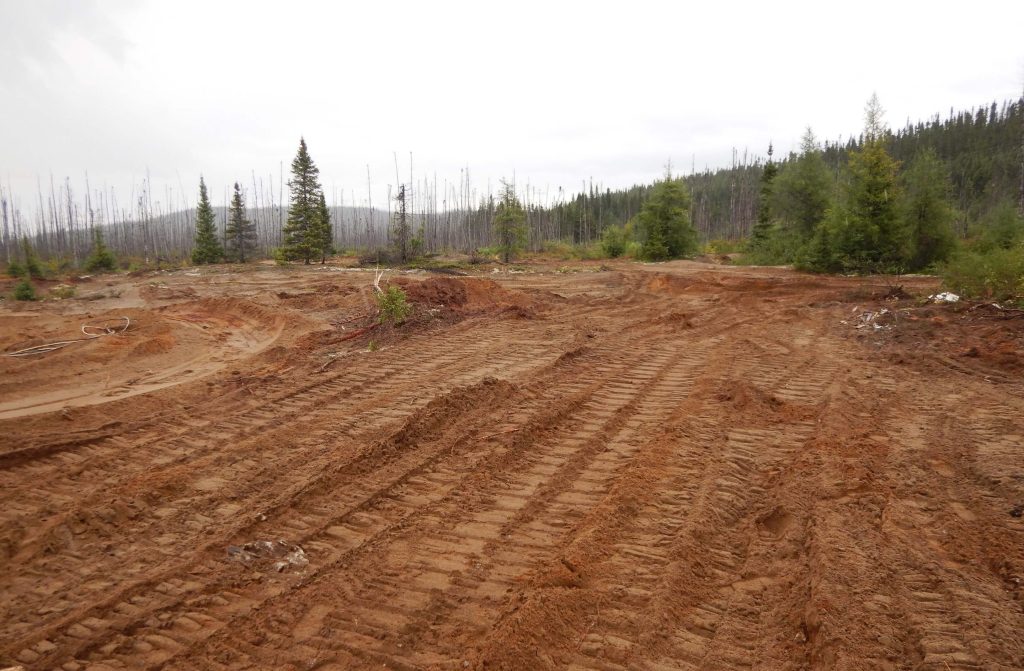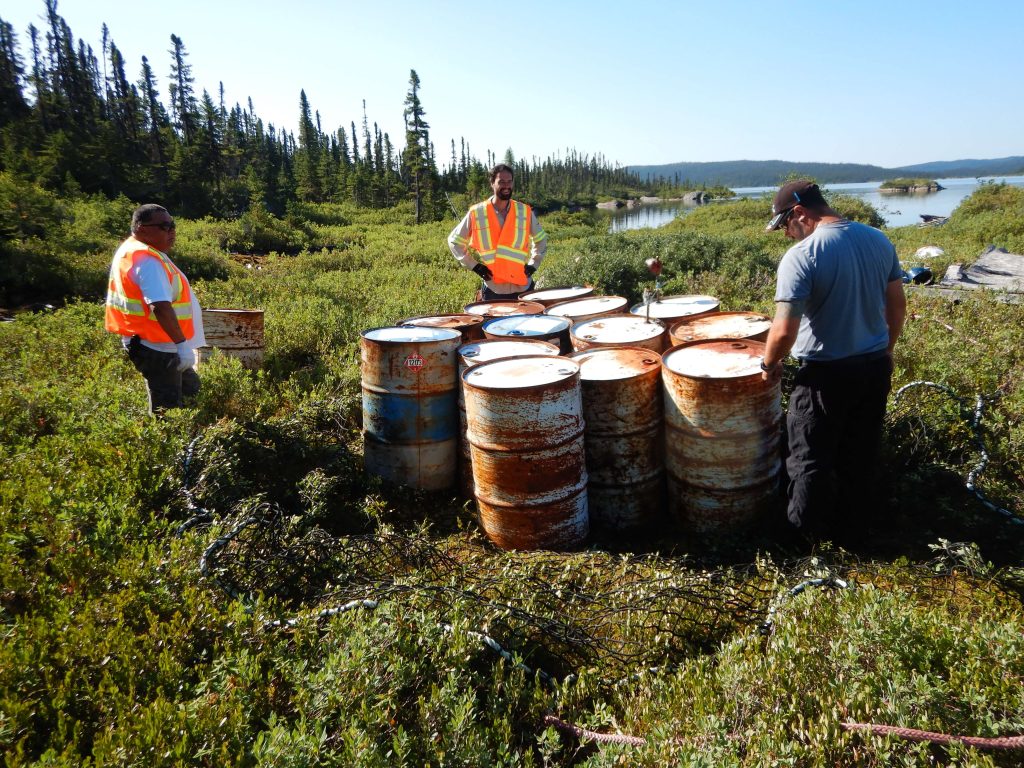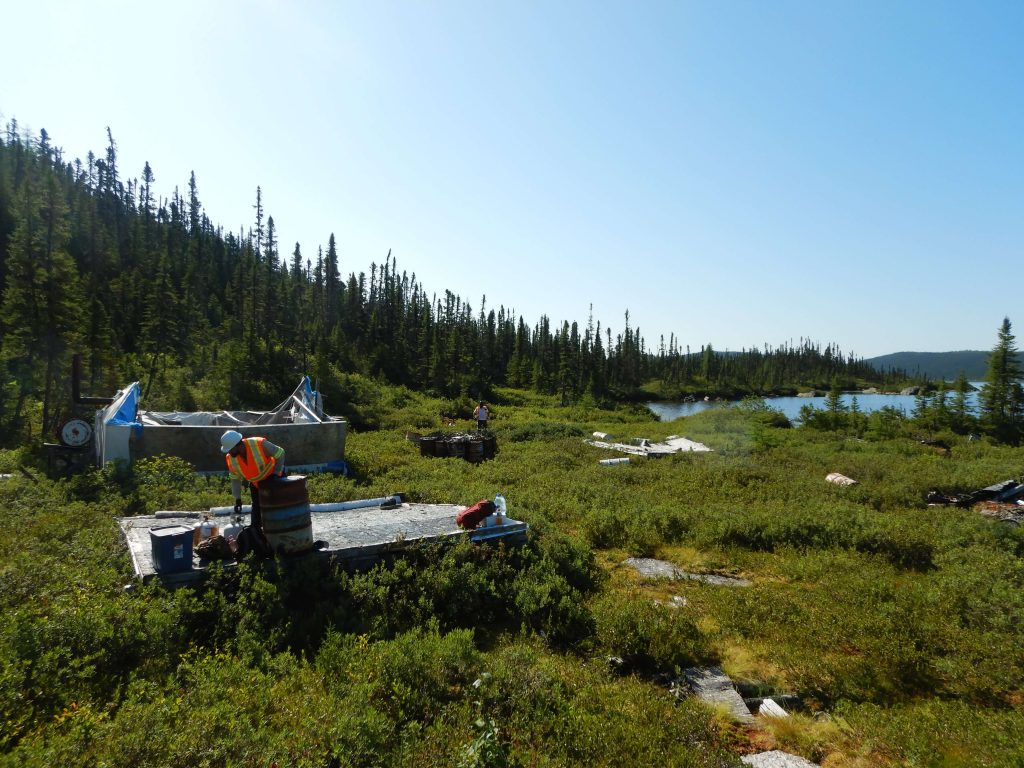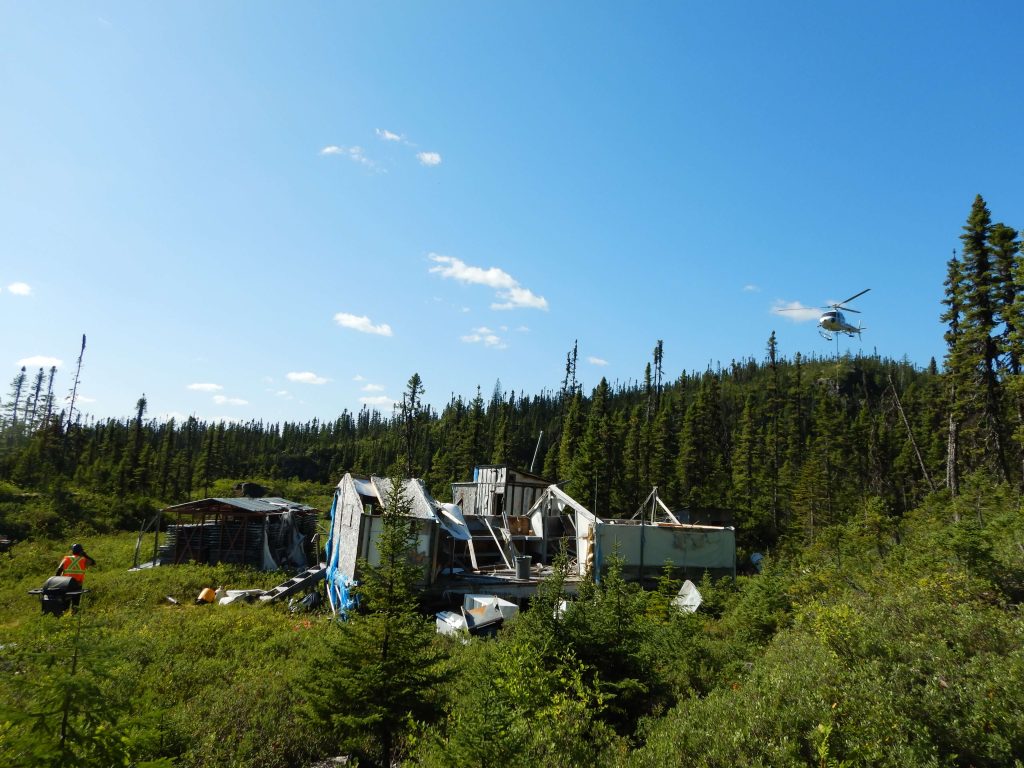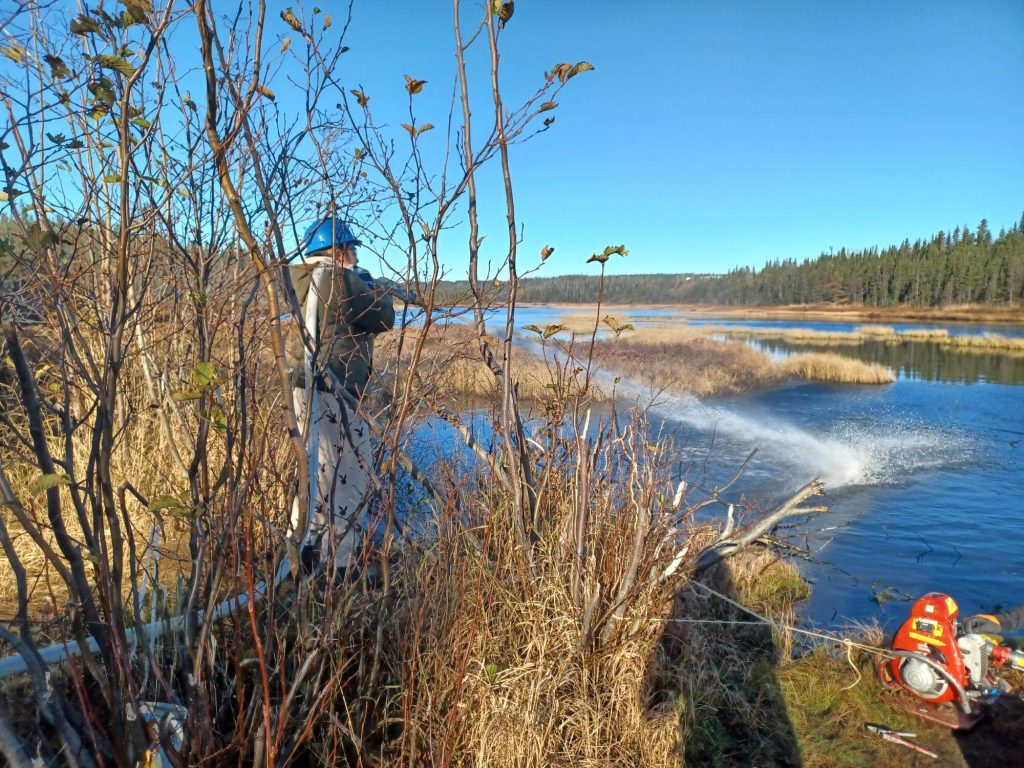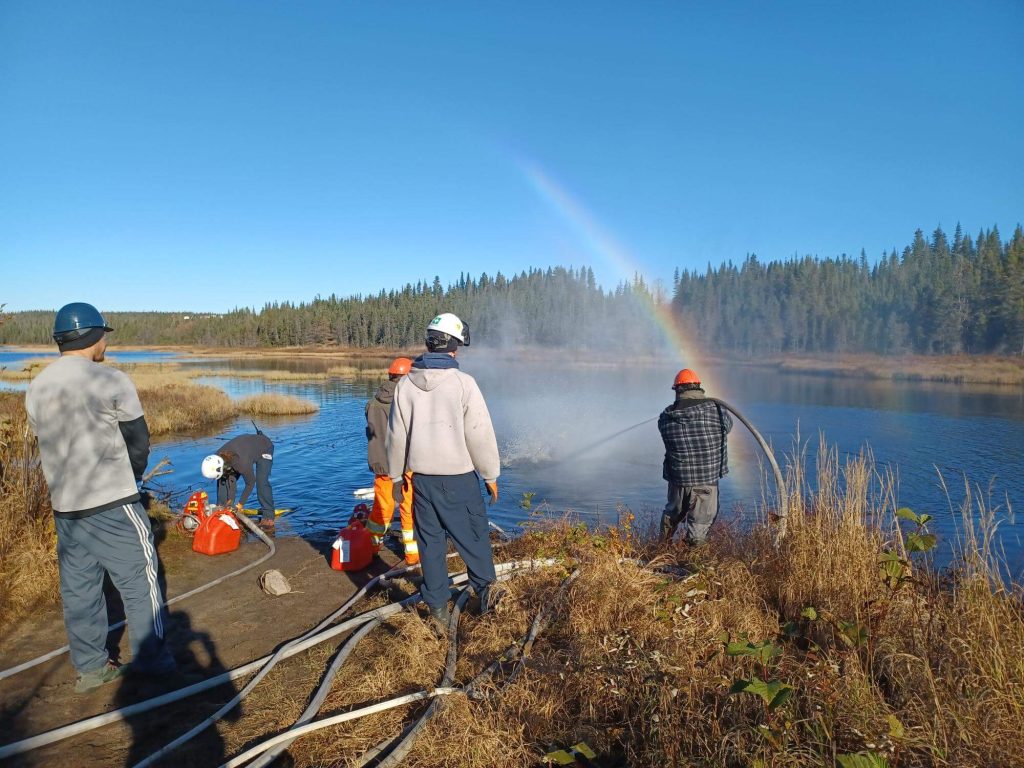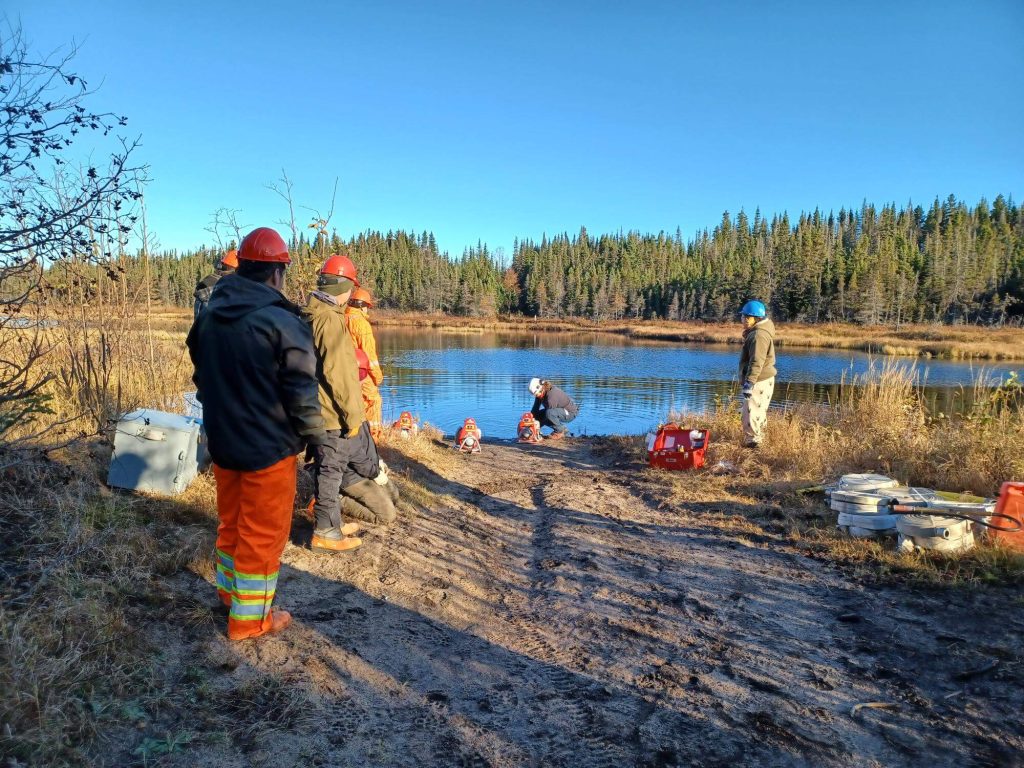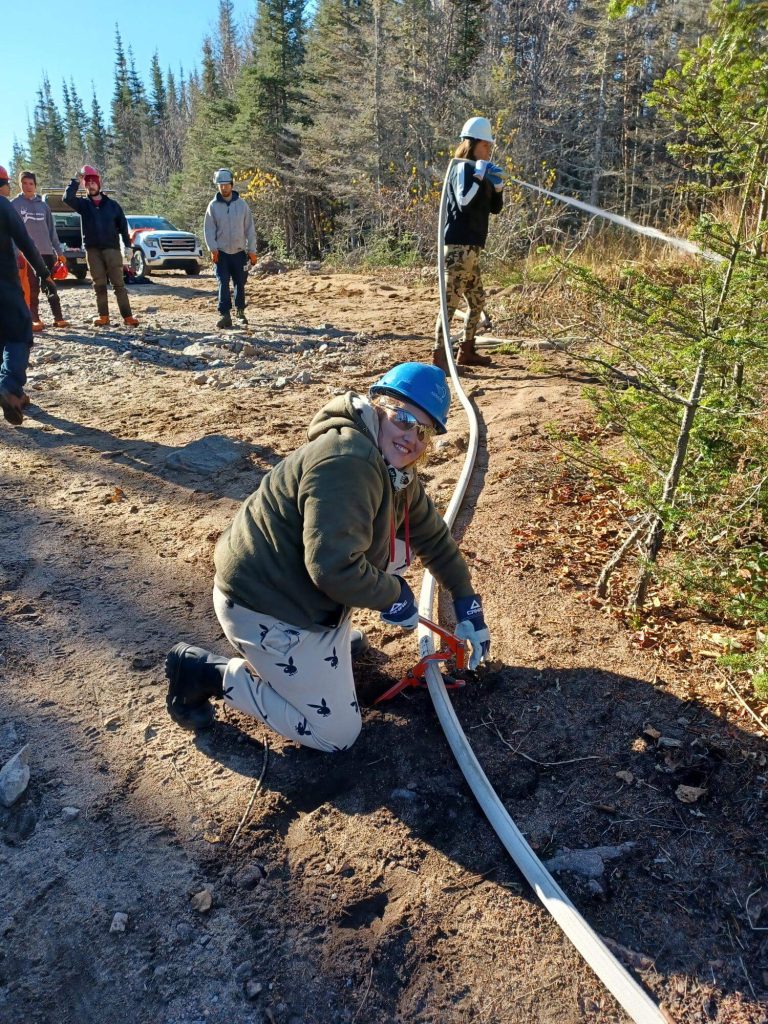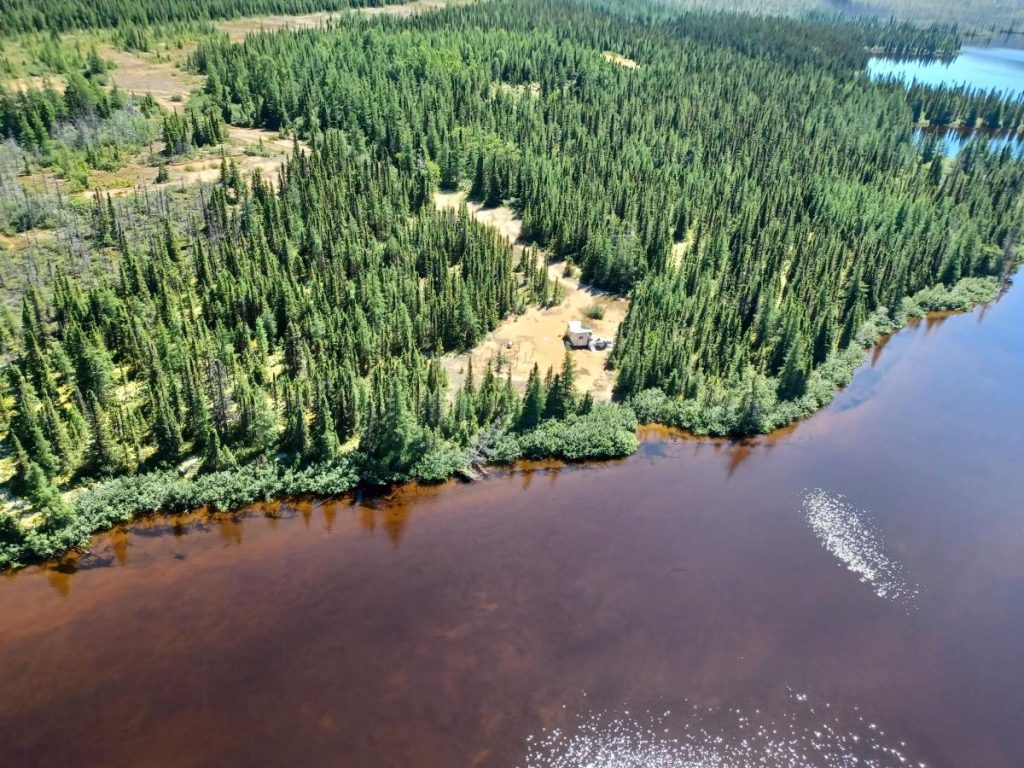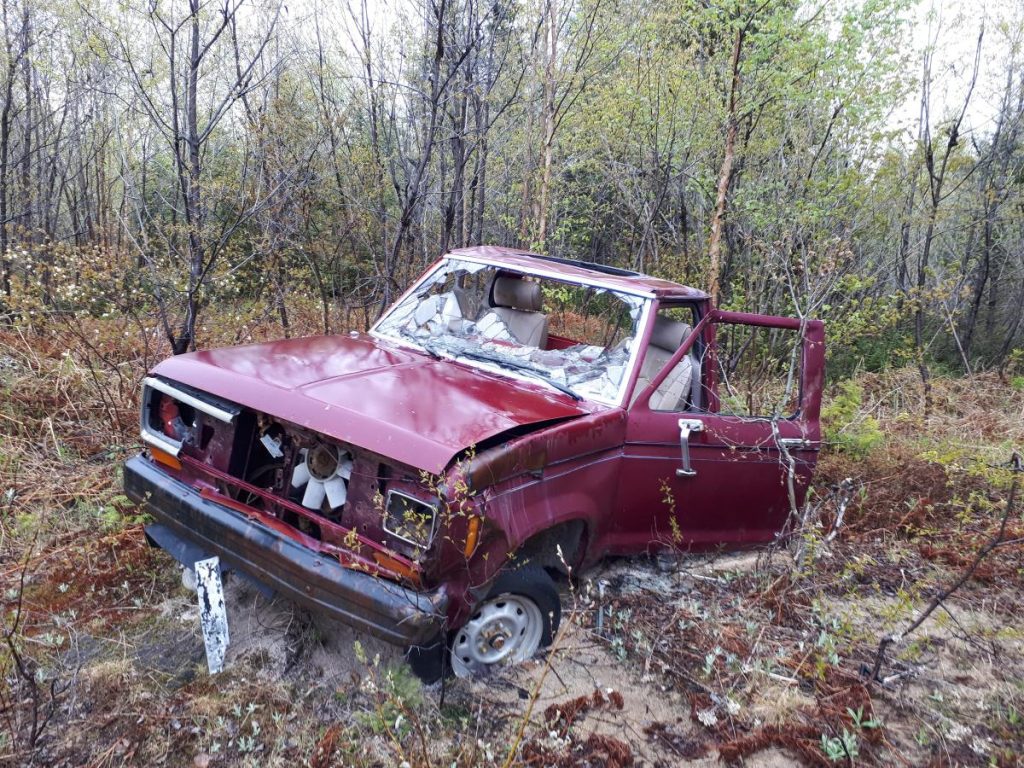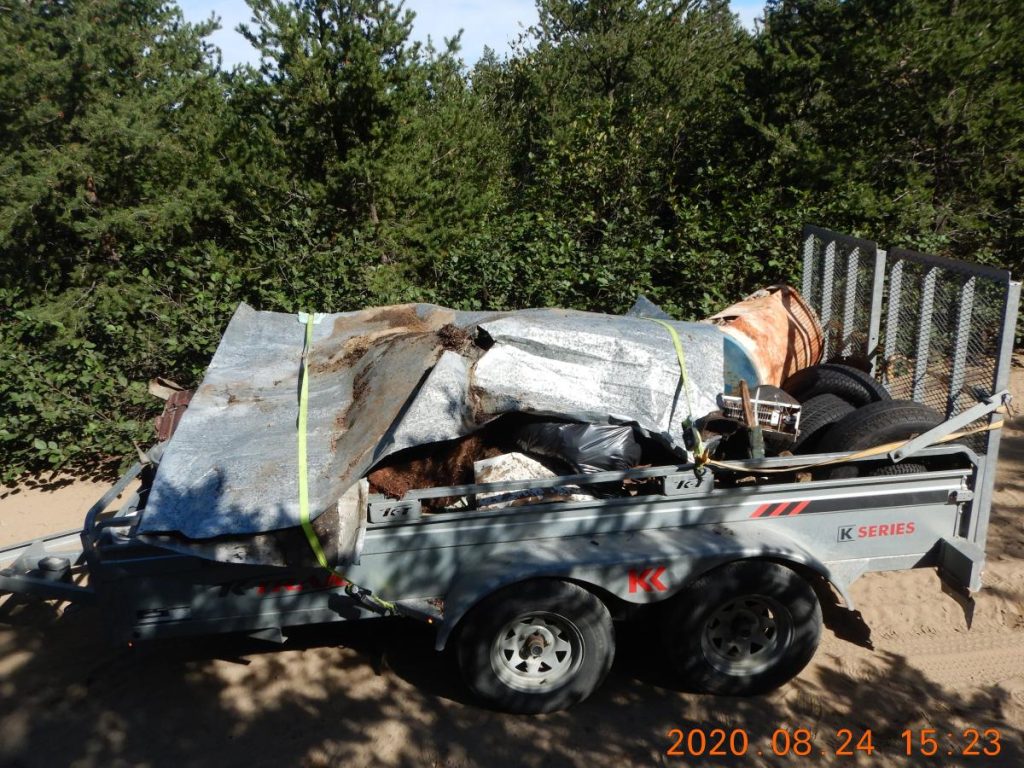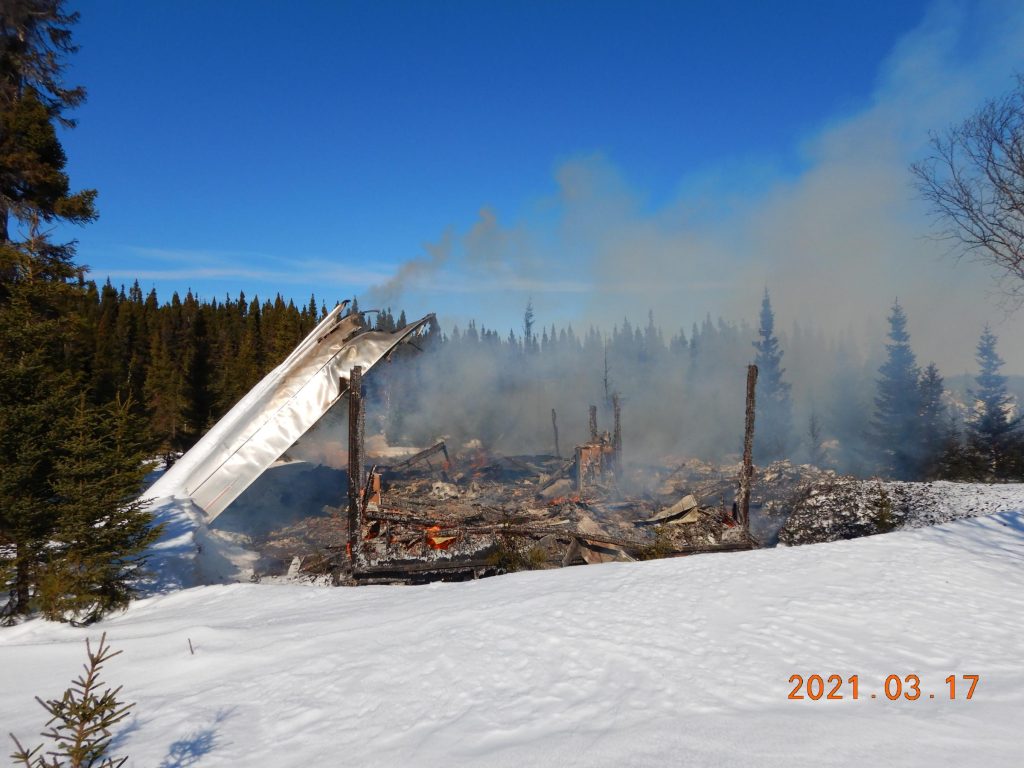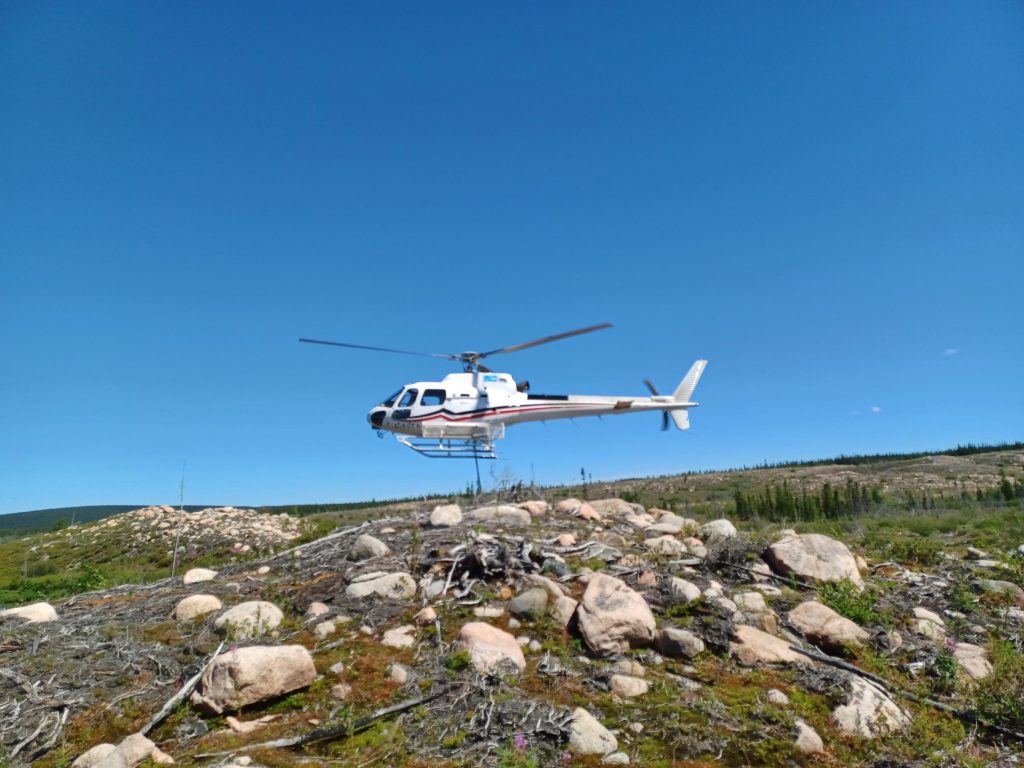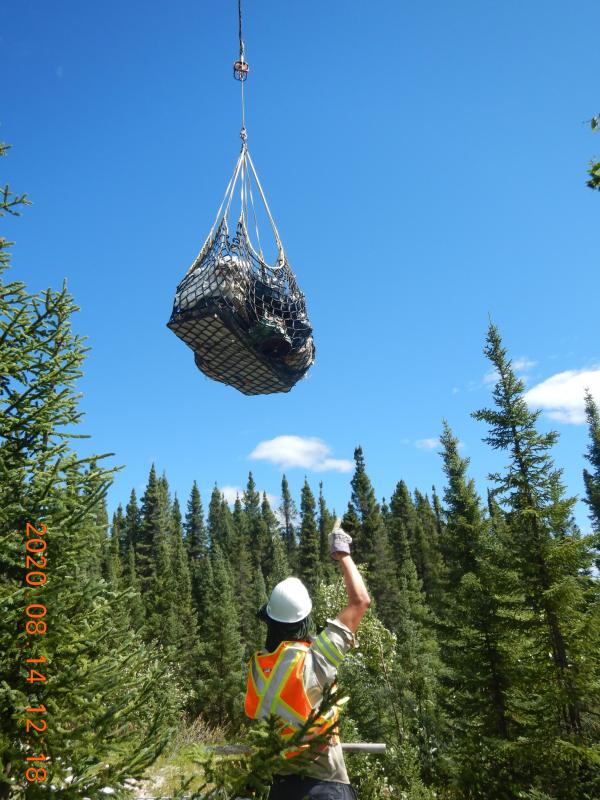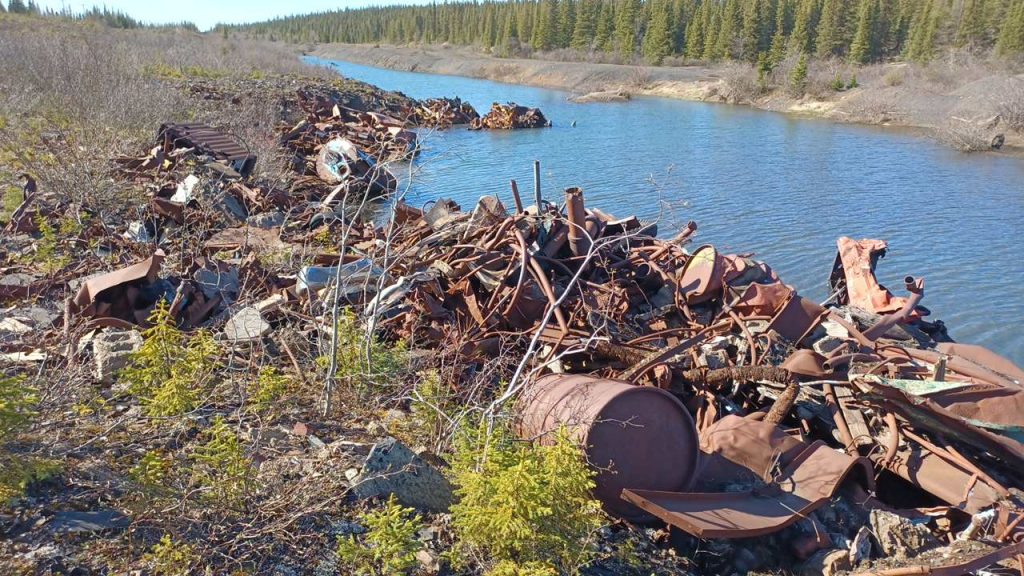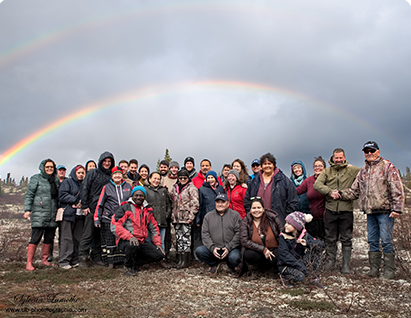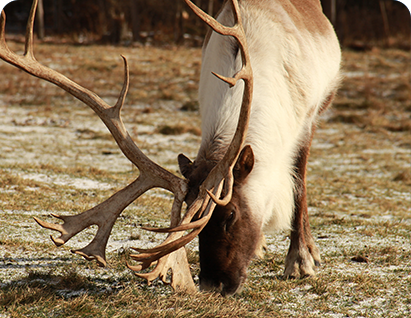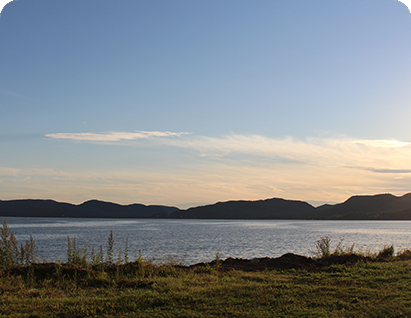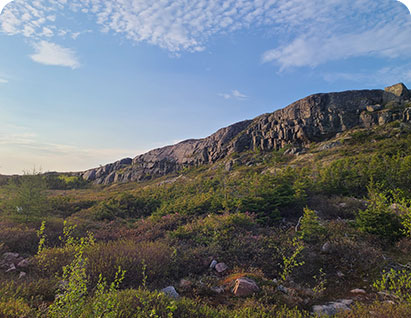Abandoned site restoration: Cleaning up
nutshimit and training First Nations members
A joint project with the First Nations of Essipit, Pessamit, Uashat mak Mani-utenam, Ekuanitshit, Matimekush–Lac John and Kawawachikamach.
We’ve been working with several Innu and Naskapi First Nations since 2018 to map, characterize and restore abandoned sites on nutshimit, or traditional lands. These sites are mainly former mining exploration sites, abandoned hunting and fishing lodges and illegal dumps.
Working with members of participating communities, we produced a mapped inventory in 2018. We went out on the land the following year to conduct an environmental characterization of the sites and establish an order of priority for future interventions. We have been carrying out restoration work every since to get the sites as close as possible to their natural states.
Collaboration the key to success
This project is the result of a meaningful collaboration with the First Nations involved. With their knowledge of the land, they were able to help us identify sites of interest and then take us out on the land for the site characterization and restoration work. In exchange, we provided over twenty community members with training on remote first aid, the Workplace Hazardous Materials Information System (WHMIS) and the SOPFEU (Société de protection des forêts contre le feu) information system.

Report Highlights
196
Abandoned sites identified through territory users from communities
108
Sites visited
38
Sites cleaned by our field teams
Tshinashkumitnan to the First Nations partners in this project: Uashat mak Mani-Utenam, Ekuanitshit, Pessamit, Matimekush-Lac-John, Kawawachikamach, Nutashkuan and Essipit




Teams satisfied with their work in the field
Six great years!
2018
PHASE 1 : Cartographic inventory of participating community members

2019
PHASE 2 : Environmental characterization of sites and prioritization of interventions

2019-2024
PHASE 3 : Work carried out to restore abandoned sites and make them as natural as possible

Guided Tour Map
First nations expertise
The success of the project depends on Indigenous expertise. Territory experts and workers come from the communities we work with. Contracts are awarded to local First Nations contractors. Our teams also make sure to prioritize partner-affiliated transportation companies, hotels, caterers, translation, room and equipment rentals, and door prizes from local businesses.
+ More than 40 First Nations members hired for field work
+ More than 50 contracts awarded to Indigenous companies or organizations
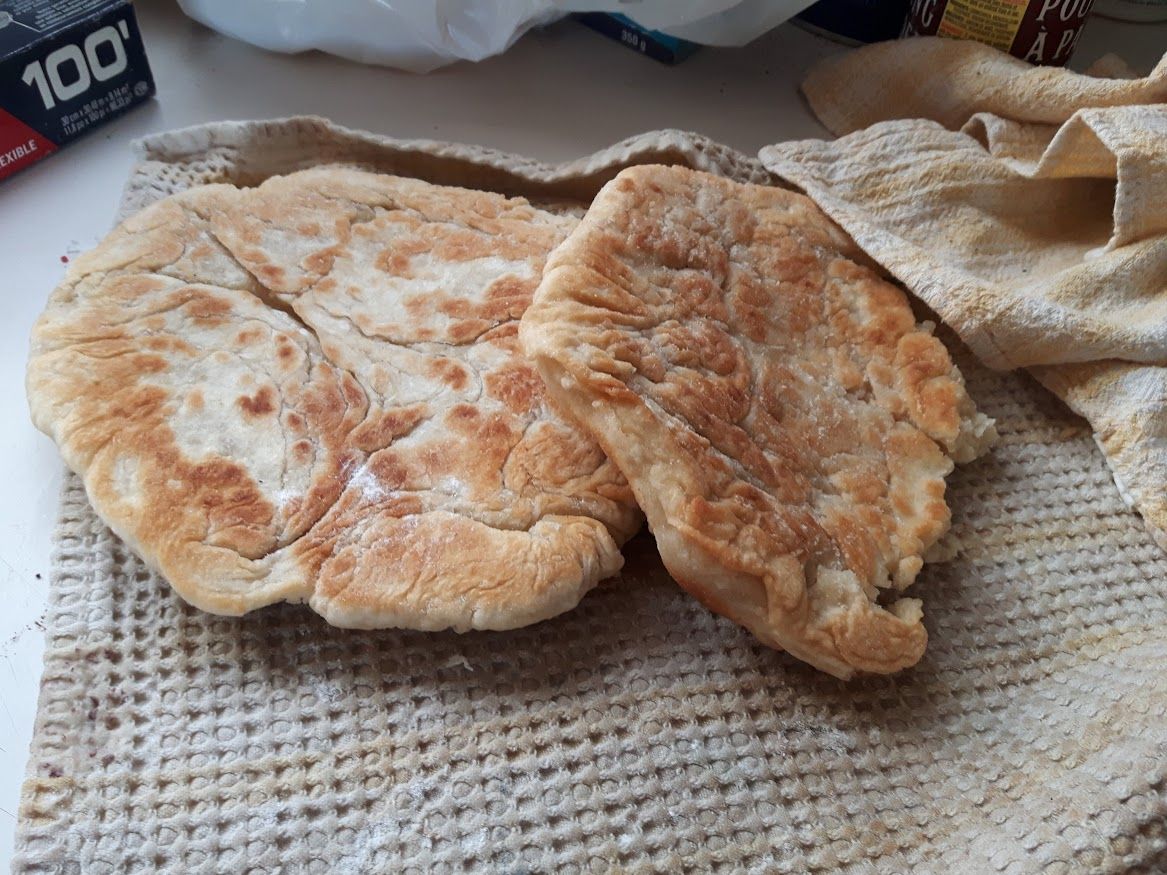
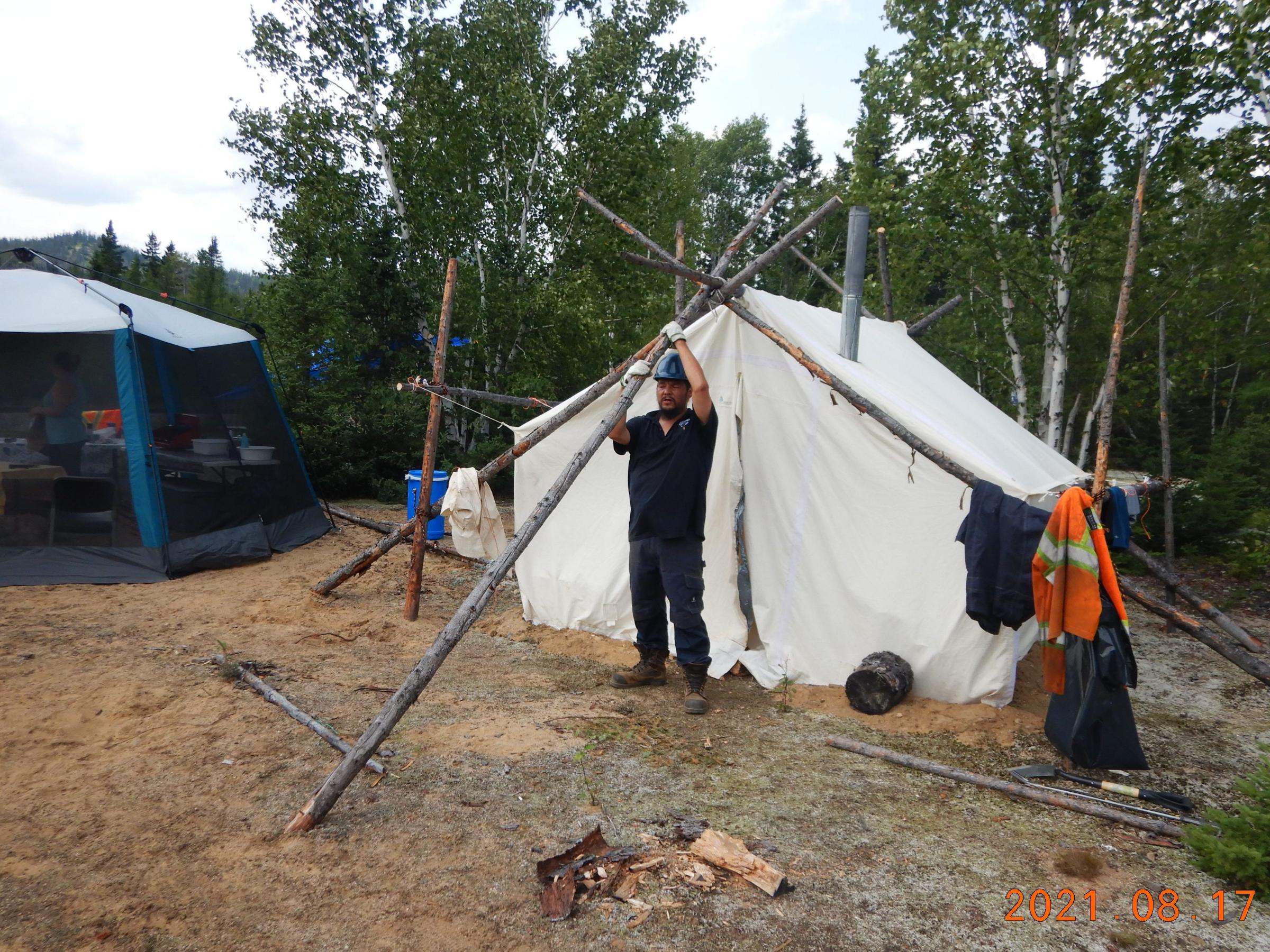

”I loved working on the project and my experience! I think it's good for the land and the environment. It sets a good example for the population and brings a greater respect for the land. I would certainly continue if I had the chance.
Billy Jean-PierreSite dismantling technician and Uashat Mak Mani-Utenam community member
Recommendations
Recognize the role of First Nations in the FDE program
First Nations have a key role to play in the FDE process. The federal government must recognize their expertise in prevention and territorial management. The infractions committed by companies occur on their ancestral territories. This type of funding, to be favored, must go directly to First Nations and their projects, without competitive bidding.
First Nations should:
- Be part of the fund’s governance and be the first to access it
- Determine funding recipients for future projects

Follow-up on cleaning
The work on Nitassinan is far from complete! Over 100 sites are still waiting to be cleaned up. It is imperative that the FDE guarantees the continuation of these efforts for a sustainable restoration of the impacts of the past.
”I'd seen abandoned sites in the past and wondered how they could be cleaned up. The FNQLSDI came up with a project to restore abandoned sites, which was a great help, and I loved the FNQLSDI's professionalism. I would continue the project at 200% and do ten times more.
Gloria VollantInnu Aitun consultant for ITUM and member of the Uashat Mak Mani-Utenam community
Acknowledgements
We would like to sincerely thank :
- The families who welcomed us to their territory
- The territorial experts and community workers
- The hotels Innutel – Rodeway Inn | Schefferville | Vacances Essipit | Quality Inn de Sept-Îles
- The caterers and cooks in each community
- Elders for simultaneous translation
- All the small and large businesses that enabled us to offer door prizes
- Community halls: Maison de la culture Innue – Ekuanitshit, Musée Shaputuan – Uashat, Centre d’affaires – Pessamit, Ancienne salle communautaire et école Kanatamat – Matimekush-Lac-John)
And all the following partners:
- The Shaputuan Museum and the technical services of Innu Takuaikan Uashat Mak Mani-Utenam (ITUM)
- The community councils of : Pessamit | Ekuanitshit | Essipit | Nutashkuan | Matimekush-Lac-John | Kawawachikamach
- Le CRÉA of Uashat Mak Mani-Utenam
- Indigenous businesses: Innukoptères | Nishk Construction | Terrassement Katekass | Uanan Expert Conseil
- Mushuau Nipi corporation
- The city of Sept-Îles & Tricomm ecocenter
- Rio Tinto | IOC et QNS & L
- Hydro-Québec


